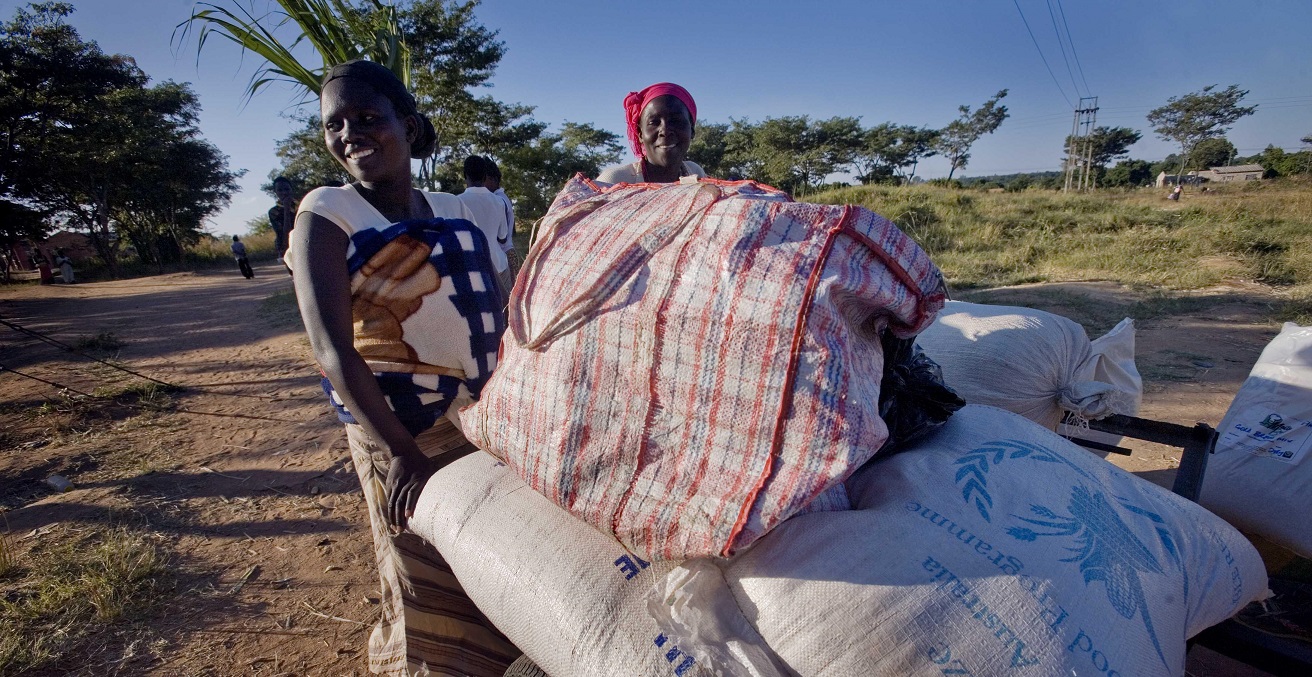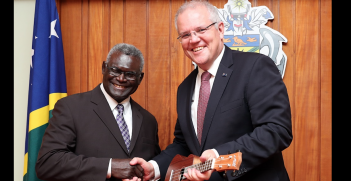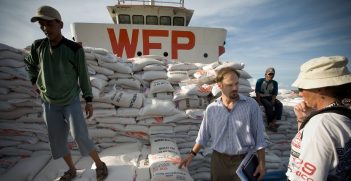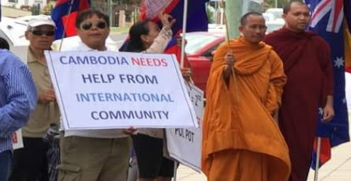Local as Possible, International When Needed: More Intelligent Aid

International aid is in desperate need of a complete shift in direction, one which is focused on building local capacity, incorporating emerging technology and genuine collaboration.
Australian Red Cross Director of International, Peter Walton, responds to questions from Australian Red Cross media and communications advisor, Antony Balmain, about new approaches to delivering international aid, including what the Red Cross is calling ‘Intelligent Aid’.
Q: What is ‘Intelligent Aid’ and why are we looking at changing the way the aid system operates?
What Red Cross is seeking to do, something which sounds obvious but hasn’t really been done in any location, is take a number of the learnings from a whole range of things that are done within the humanitarian sector but often in isolation.
We’re thinking through the concept of ‘More Intelligent Aid’, how to reduce risk: How do we actually put more attention on preventing and mitigating disaster before it strikes? How do we have the right legal environment, the right use of technology, the right use—and primacy—of local actors? A whole range of things which will work together—in a mutually reinforcing way—which, we would argue, would give you a much smarter system and ultimately save lives and save money.
Q: What does that mean in practice? What opportunities are there to make aid more efficient?
There are a number, and More Intelligent Aid is something we’re going into this saying, ‘we don’t have all of the answers’, but we really want to look at how we can mobilise entrepreneurs and different forms of industry to work with us on a co-design to redesign the operational architecture of a system that currently isn’t really fit for purpose.
In practice, this could mean having the right legislation in place. Let me give you a couple of examples: When we see earthquakes in Nepal, we go through the same pattern where people want to give support immediately, but then they face barriers; there isn’t appropriate legislation to fast-track customs clearance; there isn’t legislation in place in terms of fast-tracking landing rights at an airport in a landlocked country.
Q: In Nepal after the massive earthquake, were we seeing big hold-ups with aid getting into the country?
Yes, and that’s reflected in the media. It goes from huge outpourings of grief and empathy, through to ‘Why is aid not getting through fast enough?’. Aid is often blocked at an airport waiting for clearance at customs. Sometimes that customs clearance costs a huge amount of money. In other cases there are unsolicited goods blocking up an airport. In many disasters recently, the clearing of unwanted donations costs millions for the country which is still trying to recover their economy and recover from a natural disaster.
Q: What sort of goods are we talking about? People have the best intentions, surely they’re sending things which are useful?
No, not always, there are some quite amusing stories about a shipment of bras going to Samoa and costing about a $1.5 million to dispose of. Many of these unneeded items end up in landfill. The legislative environment is really important. Imagine a world where domestic legislation is also better at assisting countries to prepare for, respond to and recover from disasters.
In Vanuatu, there are examples where some people are still struggling to rebuild their homes because of an inability to prove land ownership for land that they’ve lived on for generations. If we could get that right, the international assistance offered would be fundamentally different.
Another example would be the use of technology. We have so much data in the world now, but it’s not always being linked to making better decisions for humanitarian outcomes. We have really good meteorological information and that isn’t always linked to making the right decisions for early action. How do we change that? How do we fund things that are responding to specifically to scientific information, such as climatic events, whether that’s cyclones or even the slow-onset things like an El Nino crisis. We can all see these things coming, but we don’t always link it through to better preparation and reducing risk.
Q: So it could be a season that warns of more floods or more droughts, and we could prepare for that earlier?
Start preparing communities early and there’s a whole range of things you can do in terms of taking early action that reduces risk and saves lives. Technology is fundamentally important and really should be much better embraced. There are examples of it all around the humanitarian system, but our argument, through More Intelligent Aid, is they’re often done in isolation and are not part of a cohesive, collective whole.
Q: I understand that drones and unaccompanied aerial vehicles could be useful as well?
We’re looking at research to explore how drones can be better used in that immediate 24- to 48-hour period. When we think about some of the cyclones that hit the Pacific region in recent years, often the cloud cover and the remnants of major cyclones has meant it’s impossible to have a flyover of remote islands or even some of the main islands straight away because planes can’t fly low enough. Drones give us the possibility of doing rapid change detection, gathering information, linking that up to satellite imagery that we use in advance, and then knowing where we should target aid.
Q: There is a growing international focus on making aid more local. Is this change overdue?
I think it’s well overdue. If you think about a disaster that hits a country like Australia, where we have lots of natural disasters, floods and bushfires, it’s very rare for there to be a major event where we would require international assistance. Largely, we have the capability to deal with it ourselves. There are a few exceptions to that, but when it comes to developing countries, we’re often stuck in this pattern where it’s the international system rushing in rather than supporting the local capacity to be more resilient and to better withstand, prepare for and recover from disasters.
Q: There are some that say that the aid sector is one of the biggest industries in the world and that it’s self-perpetuating. Do you think we need a complete paradigm shift, a massive change in the way we do aid?
Yes, I do. I think we build on the strengths and the lessons of the past, but there needs to be a fundamental shift, especially around power dynamics, in putting local people in charge of their own destiny and local organisations and communities in the driving seat for how they prepare for and respond to humanitarian consequences and broader development. We need a paradigm shift for all the major changes that we’re seeing, but also for the sustainability of the model. I think we have to see changes in business models within international organisations; we have to see a change in mindset around improved collaboration, not just cooperation and coordination but genuine collaboration which puts humanity first.
This is an edited transcript from an Australian Red Cross ‘How Aid Works’ podcast: More Intelligent Aid.
Peter Walton is international director at the Australian Red Cross. He has more than 20 years’ international experience working in multi-sector international development in both not-for-profit organisations and the private sector.
This article is published under a Creative Commons Licence and may be republished with attribution.





